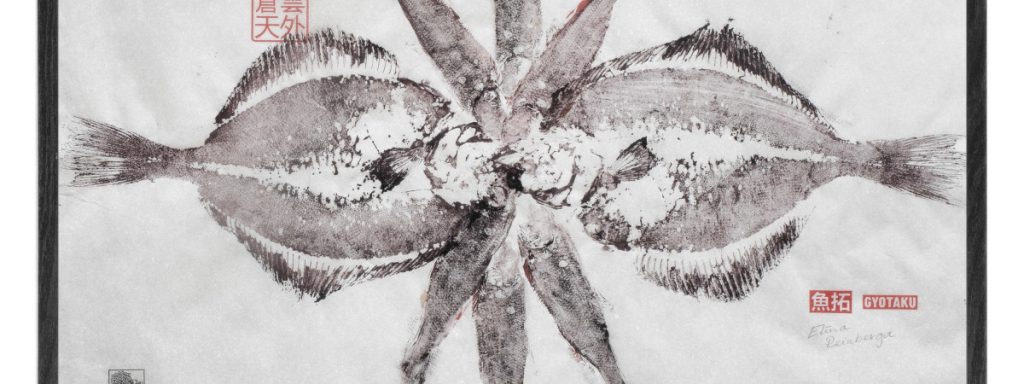Gyotaku, which literally translates into “fish” (gyo) and “rubbing” (taku), is an art that produces imprints of fish through the method of rubbing. Gyotaku – the traditional Japanese art of fish printing is not only an art form but a way of documenting in detail the fish caught by fishermen. It was used as a way to brag their “trophy catches” of any large or unusual fish, so that other fishermen could see the proof of it to believe it. Among the tools necessary to catch fish, Japanese fishermen often had paint and rice paper in their boat, so that freshly caught fish could be documented on paper, then washed and released or eaten. Over time this traditional technique evolved into a genre of scientific illustration and a modern art form.
Project manager, Lithuanian guest lecturer Petras Saulėnas mentions: “I think this project of Gyotaku printmaking together with students of Liepaja University will focus more attention on local marine tradition and its contemporary challenges – the students document the fish that were caught in the Baltic sea and bought at the local market. Gyotaku artist Naoki Hayashi believes that true Gyotaku can be made only with the fish that is caught by yourself, then printed and later eaten. This is a more sustainable and conscious way to live and create art with minimal waste. In contrast with large scale commercial fishing and sea pollution such as meditative art forms invite us to slow down and rethink our relationships with the sea.”
Traditional Japanese Gyotaku is finished with an artist‘s signature in the form of a seal or stamp, but the seal in the form of Liepaja coat of arms emphasizes the city of Liepaja and its history. By using the same hanko seals the students are unified and send a strong message together. Works were made by the 1st year students of the LiepU study programme “Design”.
Petras Saulėnas summarizes: “We managed to print the Gyotaku before the pandemic, but unfortunately the project must wait until it will be safe to exhibit publicly. Therefore I decided to photograph and “frame” works digitally, making them look close to what they would look like in an exhibition. And now that the closed borders are keeping us home, we can use this opportunity to appreciate our local nature and think about how we can bring positive change in the future. With this project we want to help raise awareness and invite to look more closely at the environment that surrounds us, because the best good deeds may be the simplest ones that require cleaning up the ground under our feet.”
The guest lecturer activities are supported by the European Social Fund project “Perfection of the Academic Staff of Liepaja University in the Areas of Strategic Specialization – Natural Sciences, Mathematics and Information Technologies, Art, Social Sciences, Commerce and Law” (No 8.2.2.0/18/A/021).

